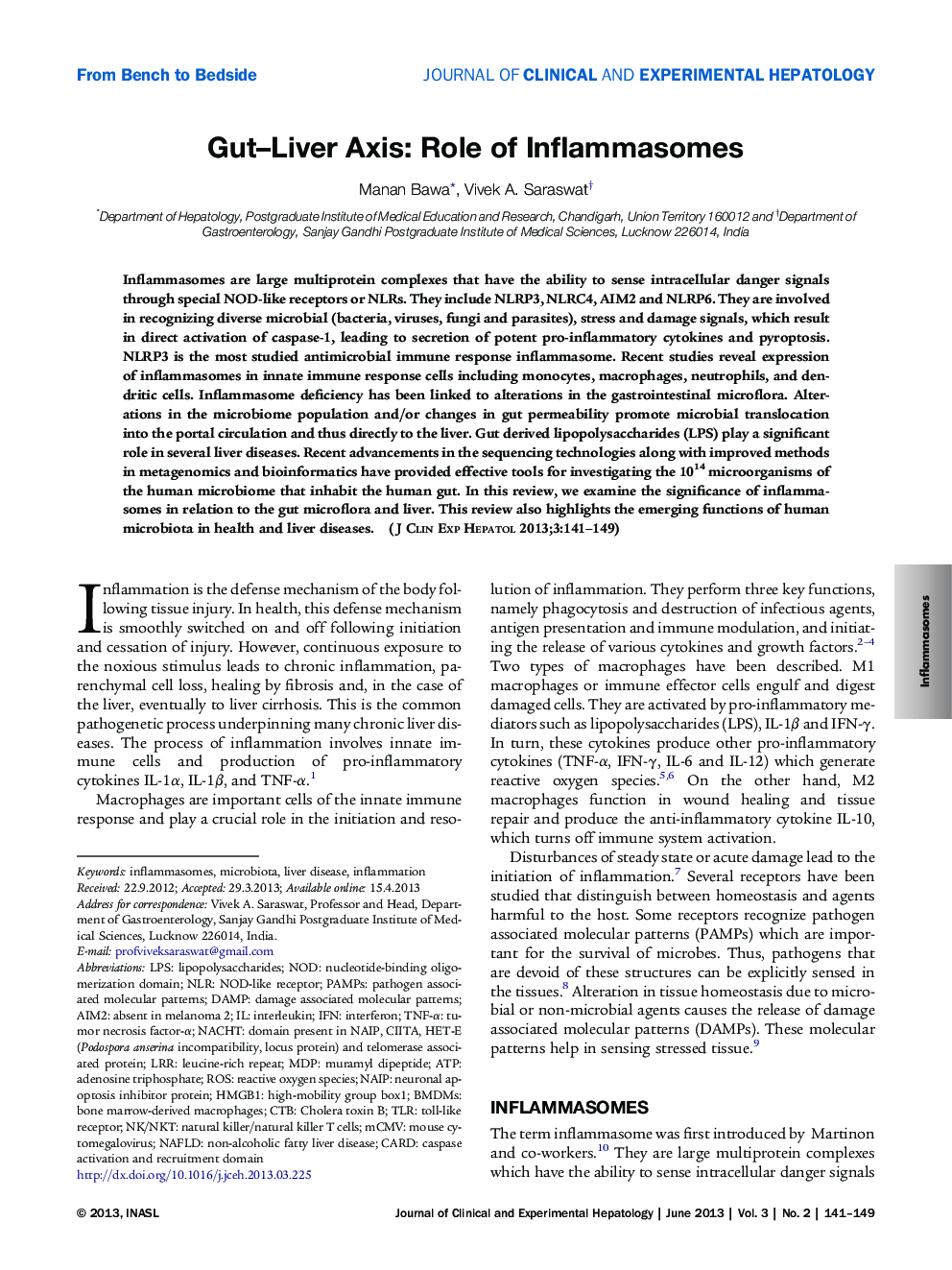| کد مقاله | کد نشریه | سال انتشار | مقاله انگلیسی | نسخه تمام متن |
|---|---|---|---|---|
| 3339439 | 1213908 | 2013 | 9 صفحه PDF | دانلود رایگان |

Inflammasomes are large multiprotein complexes that have the ability to sense intracellular danger signals through special NOD-like receptors or NLRs. They include NLRP3, NLRC4, AIM2 and NLRP6. They are involved in recognizing diverse microbial (bacteria, viruses, fungi and parasites), stress and damage signals, which result in direct activation of caspase-1, leading to secretion of potent pro-inflammatory cytokines and pyroptosis. NLRP3 is the most studied antimicrobial immune response inflammasome. Recent studies reveal expression of inflammasomes in innate immune response cells including monocytes, macrophages, neutrophils, and dendritic cells. Inflammasome deficiency has been linked to alterations in the gastrointestinal microflora. Alterations in the microbiome population and/or changes in gut permeability promote microbial translocation into the portal circulation and thus directly to the liver. Gut derived lipopolysaccharides (LPS) play a significant role in several liver diseases. Recent advancements in the sequencing technologies along with improved methods in metagenomics and bioinformatics have provided effective tools for investigating the 1014 microorganisms of the human microbiome that inhabit the human gut. In this review, we examine the significance of inflammasomes in relation to the gut microflora and liver. This review also highlights the emerging functions of human microbiota in health and liver diseases.
Journal: Journal of Clinical and Experimental Hepatology - Volume 3, Issue 2, June 2013, Pages 141–149